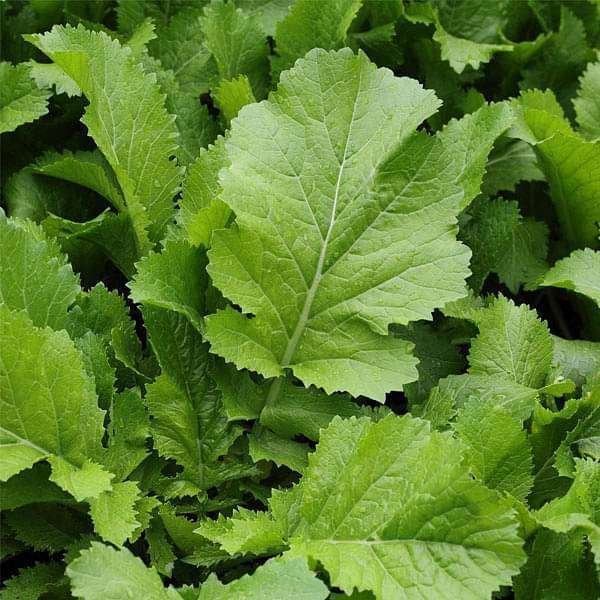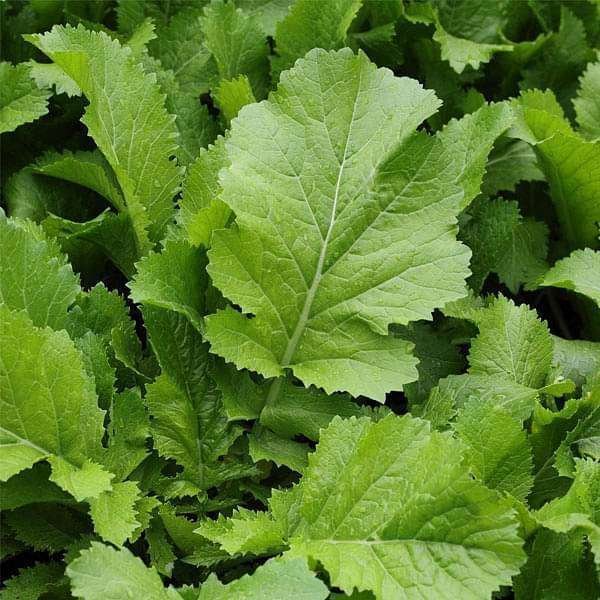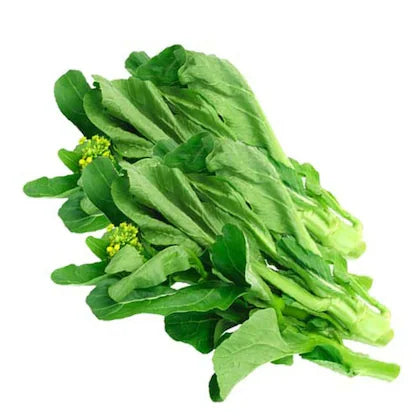Heavenleaf
Mustard Green Seeds For Sarso Saag - 700 Seeds(साग वाली सरसों के बीज)
Mustard Green Seeds For Sarso Saag - 700 Seeds(साग वाली सरसों के बीज)
Couldn't load pickup availability
**7 Days Easy Return Available**
Sarso Saag (Mustard Greens) is a popular winter leafy vegetable in India, especially in Punjabi cuisine. The plant belongs to the species Brassica juncea, and its dark green leaves have a bold, slightly peppery flavor. It is traditionally used to make the famous dish "Sarson ka Saag" served with Makki ki Roti.
Key Features of Mustard Seeds
-
Fast-growing cool-season leafy vegetable
-
Grown from October to February (in North India)
-
Ready to harvest in about 40–50 days
-
Suitable for pots, grow bags, or garden beds
-
Can regrow after harvesting if roots are intact
-
Best grown in loamy, well-draining soil
-
Thrives in temperatures between 10–22°C
How to Grow Mustard Greens (Sarso Saag)
Sowing:
Sow the seeds 1 cm deep directly in the soil or in seedling trays. Ensure even spacing between seeds.
Spacing:
Once seedlings sprout, thin them out so there is 25–30 cm space between plants.
Sunlight:
Mustard greens need 6–8 hours of direct sunlight daily. Partial shade can work in hotter regions.
Soil:
Use fertile, well-draining soil with good moisture-retention and a pH between 6.0 and 6.5.
Watering:
Keep the soil moist but not soggy. Water regularly, especially in dry weather.
Fertilizer:
Add organic compost or vermicompost during sowing. A mild balanced fertilizer every few weeks helps growth.
Pest Management:
Protect from aphids and leaf-eating pests using neem spray or organic soap solution. Remove infected leaves.
Harvesting & Culinary Use
Harvest Time:
Usually 40–50 days after sowing. Leaves should be tender and fully developed.
How to Harvest:
Cut leaves with a clean knife or scissors about 1 inch above the base. Plants may regrow.
Culinary Use:
Mustard greens are most famously used to prepare Sarson ka Saag, cooked with spinach and spices, topped with ghee. They can also be used in soups, parathas, and stir-fries.
Nutrition & Health Benefits
-
High in Vitamin A, C, and K
-
Good source of iron, calcium, magnesium, folate, and potassium
-
Rich in fiber and low in calories
-
Contains antioxidants that support heart, bone, and immune health
-
Helps in digestion and detoxification
-
May have anticancer properties
(FAQ)
Q: When is the best time to sow mustard seeds?
A: Best time is from October to January in most Indian regions.
Q: Can I grow mustard greens in pots?
A: Yes, use medium to large pots or grow bags with good drainage.
Q: How do I keep the leaves tender and not bitter?
A: Harvest before the plant flowers. Avoid growing in hot weather.
Q: How often should I water mustard greens?
A: Water 2–3 times per week or whenever the topsoil feels dry.
Q: Can I harvest multiple times?
A: Yes, if roots are intact and healthy, leaves may regrow for 1–2 more cuttings.
Share





